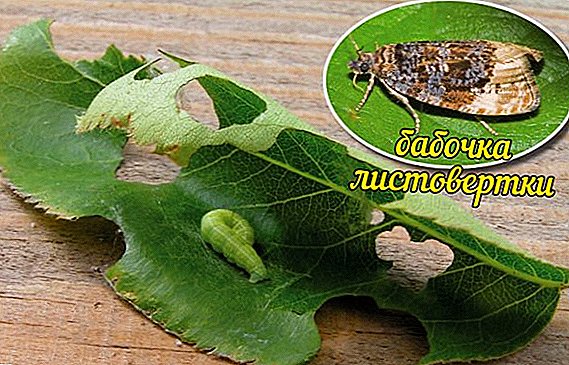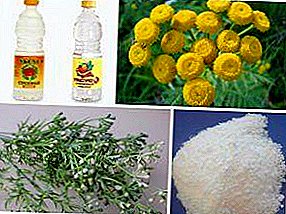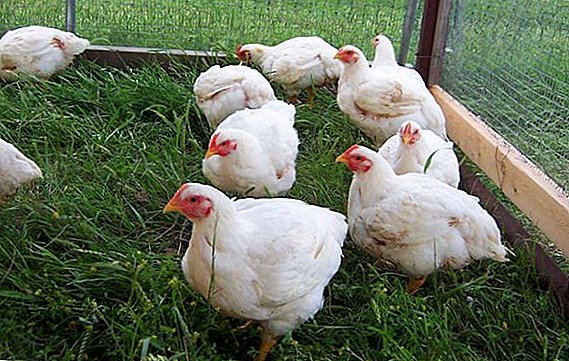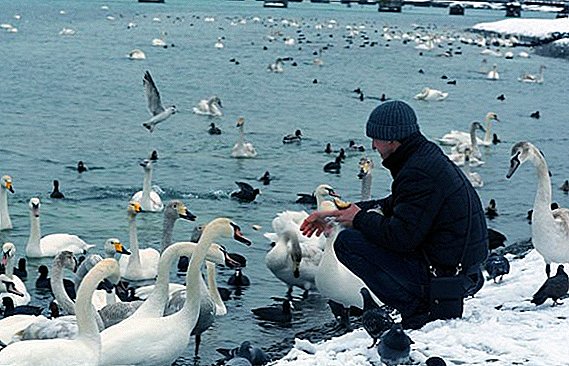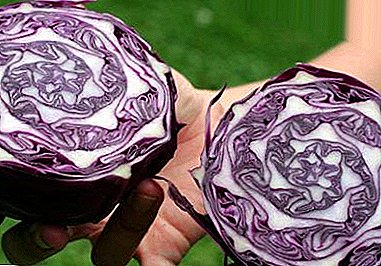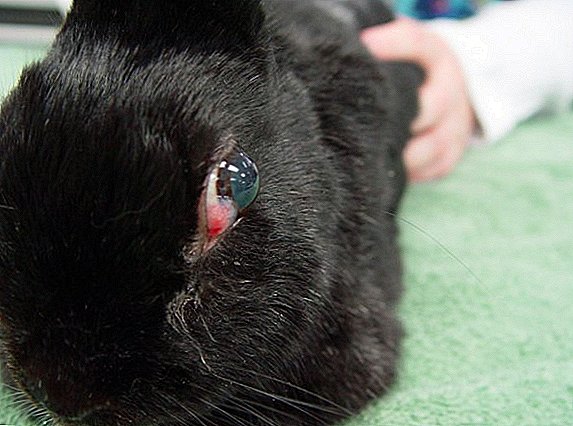 Rabbit owners quite often encounter such a phenomenon as the red eyes of their eared wards. Sometimes this is the norm, but most often it is a sign of a developing disease or eye damage. To assist the animal and prevent complications, it is necessary to establish the presence of the disease in time. In this article, we will look at cases when red eyes in rabbits are normal, as well as when they are pathological, and let us examine what needs to be done.
Rabbit owners quite often encounter such a phenomenon as the red eyes of their eared wards. Sometimes this is the norm, but most often it is a sign of a developing disease or eye damage. To assist the animal and prevent complications, it is necessary to establish the presence of the disease in time. In this article, we will look at cases when red eyes in rabbits are normal, as well as when they are pathological, and let us examine what needs to be done.
When red eyes in rabbits are considered normal
Red eyes from birth can be white rabbits, or albinos. Albinism is not a disease. Albinos are found among all representatives of the animal world, most often in mammals. And although people like white animals, for them it is unnatural.
Learn more about the white rabbits.
White color is actually the absence of natural pigment. A certain gene is responsible for the production of pigment, which for some reason does not cope with its duties. For the same reason, albinos lack the eye color inherent in their appearance.
The iris of these animals is colorless, almost transparent. Blood vessels shine through it. That is why white rabbits and other albinos have red or pink eyes.
Red eyes in a rabbit due to injury or illness.
There are many breeds of white rabbits (white Giant, white Pukhovoy, New Zealand white and others), they are characterized by red eyes. But if the rabbit is not white, but its eyes are red, or it is white, but the eyes were originally of a different color, and then turned red, this is an alarm. Red is often a symptom of eye or nose problems, allergies, trauma, or debris.
Learn how to cure and prevent diseases of rabbits: coccidiosis, scabies, lichen, listeriosis, encephalosis, myxomatosis, viral hemorrhagic disease, trauma, diarrhea, constipation, rhinitis.
Conjunctivitis
Inflammation of the conjunctiva, that is, the mucous membrane of the eye, is called conjunctivitis. Rabbits often suffer from this disease, the first symptoms of which are redness of the eyeball and eyelid, eyelid swelling and itching.
The causes of inflammation may be different:
- contact with foreign particles in the eye - dust, wool, fine debris;
- injury from impact, puncture or scratches;
- spraying chemicals - perfume, disinsection and disinfection, household chemicals;
- penetration of pathogenic microflora (viruses and bacteria);
- malnutrition with insufficient carotene (vitamin A);
- complication of diseases of the ears, nose and mouth.

To minimize the risk of disease, you need to eliminate the factors listed above.
Preventive measures:
- keep the cage clean;
- do not put it in a draft;
- remove all items that the animal can injure itself;
- do not spray chemicals near the rabbit cage;
- make sure that the daily menu of the rabbit is varied and balanced;
- time to treat other diseases - rhinitis, otitis media, stomatitis.
Familiarize yourself with the basic rules of rabbit hygiene.If the pet is still sick, you must immediately take the following steps:
- isolate the sick rabbit from the others;
- disinfect the cage;
- rinse eyes with antiseptic;
- show pet to the vet.

Treatment consists of three stages:
- Washing (with a solution of potassium permanganate, boric acid, "furatsilina" or "Albutsida").
- Instillation (with zinc eye drops, "Albucidum" or eye drops for dogs and cats).
- Laying ointment for eyelid (boric, iodoform, hydrocortisone).
What medicines are suitable for treatment, in each case the doctor decides.
Learn more about rabbit eye diseases, ear diseases, diseases of rabbits that can be transmitted to humans.
Allergic reaction
Rabbits, like people, are prone to various types of allergies. The eyes are very vulnerable and more often than other organs react to allergens. A sign of an allergic reaction are red eyes that also itch.
Especially often these symptoms appear in ornamental rabbits that live in the human house. There they are surrounded by a variety of chemicals, perfumes, cosmetics, various industrial feed - everything that can trigger the appearance of allergies.

Common causes of an allergic reaction:
- chemicals (household chemicals, flea products, perfumes, rabbit cosmetics, such as shampoos and grooming products);
- necessary household items, for example, bedding for the animal;
- acrid smoke from a fire or cigarettes;
- ammonia, which is abundant in the rabbit urine, if its food is rich in proteins;
- food products (fruits, vegetables, feed).
Learn how to choose a rabbit when buying, how to determine the sex of the rabbit, how to determine the age of the rabbit.
In order not to provoke an allergy in a pet, you need:
- do not use household chemicals in the room with a rabbit;
- not to spray in his presence perfumes and other aerosols with strong odors;
- to care for your pet use odorless cosmetics;
- Do not feed the rabbit with products that are known as allergens.
If the animal has red eyeballs and it scratches them, you need to urgently determine the source of irritation and eliminate it. Then you need to contact your veterinarian for advice. He will prescribe an antihistamine medicine, possibly Suprastin. It should act very quickly to eliminate allergies, otherwise it can turn into conjunctivitis, which is more difficult to fight.
He will prescribe an antihistamine medicine, possibly Suprastin. It should act very quickly to eliminate allergies, otherwise it can turn into conjunctivitis, which is more difficult to fight.
Learn how to contain, how to choose toys, how to feed, how to treat decorative rabbits.
Trauma tears
Quite often, redness may occur due to damage to the tear ducts.
The cause may be injuries of different origin:
- mechanical, for example, blow;
- pathological (abscess developing near the eye);
- congenital abnormalities (abnormal root growth).
If the tear duct is blocked by an increasing abscess or tooth, then one cannot do without the help of specialists: in such cases surgical intervention is necessary.
Improperly growing teeth is a fairly frequent phenomenon. But it is impossible to diminish its danger to the health of the animal. Failure to take action can lead to serious eye diseases, such as conjunctivitis, keratitis, and even loss of vision. 
Eye contact with foreign particles
Most often, rabbit eyes blush, swell and watery due to ingestion of small debris. This may be dust from hay and straw, plant seeds, small particles of dry food, hay, dirt from bedding, hair of its own wool, insects, and even feces. If the cell is in a draft, then the wind puts garbage in it, which then gets into the eyes of its inhabitants.
The eyes of the rabbits are designed so that they have a whole system of self-cleaning, including tearing. But if the pig in the eye is abundant or they get there all the time, then the tears simply do not cope and do not have time to wash the extra objects from the mucous membrane. Getting on the conjunctiva, the specks scratch it, forming microcracks. This leads to inflammation of the mucosa, that is, conjunctivitis.
Learn how to water the rabbits, how to feed the rabbits feed, what to feed them for weight gain.To prevent rubbish from getting into the eyes of rabbits and to avoid the development of this disease, you need to:
- monitor cell cleanliness;
- eliminate the possibility of drafts;
- Do not give dusty hay and other food.
Having noticed the red eyes of one of the pets, it is necessary to act without delay. The first help in this case is washing the eyes with one of the antiseptic solutions ("Furacilin", boric acid, potassium permanganate, calendula decoction or chamomile). Perhaps a few washes will be enough to remove the redness of the mucous, but it is advisable to show the pet to the veterinarian. If necessary, he will prescribe timely treatment.
How to drip the eyes of rabbits: video
Chronic nasal lesions
Red eyes can be a sign of an infection that got there from a sore nose. The most common infectious disease of the nose is rhinitis, that is, inflammation of the mucous membrane.
Symptoms of rhinitis:
- sneezing and runny nose;
- swelling and redness of the nose;
- discharge of pus from the nasal cavity;
- temperature rise.
Rhinitis is a contagious disease that moves from a sick animal to a healthy one.
Find out what the requirements for high-quality hay for rabbits.
Various factors can provoke the development of the disease:
- allergic reaction to dust (most often in hay);
- cold rhinitis due to cold and drafts;
- weak immunity due to poor nutrition (unbalanced feeding with insufficient content of essential vitamins and minerals);
- infection with an infected individual.

Measures that will help reduce the risk of the disease:
- clean cage and all inventory;
- dust-free hay and bedding;
- lack of drafts;
- proper multiple feeding;
- vaccination;
- timely isolation of sick rabbits.
Familiarize yourself with the shed, captive, cellular way of keeping rabbits.
Rhinitis can be cured in the following ways:
- Penicillin drops (dissolved in novocaine) or "Furacilin" (pour boiling water into the suspension) - drip 10 drops 2-3 times a day;
- dilute biomitsin with water and give with food (1 mg per day);
- inhalation with essential oil (eucalyptus, sea buckthorn, lavender) or herbal decoction (sage, thyme, peppermint) - are made indoors without ventilation for a week;
- antibiotic injections.
It is necessary to use only those methods of treatment that the doctor prescribes.
Treatment of rhinitis in rabbits: video
Prevention of eye diseases in rabbits
Not all eye diseases are easy to cure - they often lead to complications, sometimes even end in death. Therefore, it is better to do everything to prevent them. Preventive measures include sanitation of the cage, regular inspection of rabbits and quarantine of sick individuals.
For sanitization, you should:
- clean the cage daily;
- disinfect water bowls and feeders (every 10 days and before shingling);
- regular general cleaning of the room and cleaning of inventory.
Important! Urgent disinfection is necessary in the event of a viral illness. A specific disinfectant is suitable for each virus.Routine inspection should be carried out:
- before it happens, before okolom;
- newborn rabbits on the second day after birth;
- youngsters are examined before they are transplanted from their mother;
- every two weeks to inspect all animals.

Quarantine:
- New farm dwellers are isolated for 3 weeks, during which existing diseases may appear;
- diseased individuals and those who have been in contact with them are separated from others in order to prevent general infection.
Important! If on the farm the rabbits died from a viral infection, then the sick and those who were in contact with them of animals must be eliminated to save the rest.
Rabbits often get sick, especially they are prone to eye diseases. But proper care and attention of farmers to their animals are the main conditions for their good health.
Reviews
Now my baby is healthy, I’m right in my eyes and dribbled the medicine. Oh, I do not remember the name. We dripped like an antibiotic for animals on the “C” begins, but after reading I understood that in our case it was possible to get along with the “diamond” eyes, it seems called.

In chronic conjunctivitis, a 0.5% solution of zinc sulfate, a 0.5-1% solution of silver nitrate is instilled into the conjunctival sac 3-4 times a day, and a 1% mercury yellow 1-2 times a day is administered per eyelid ointment.



